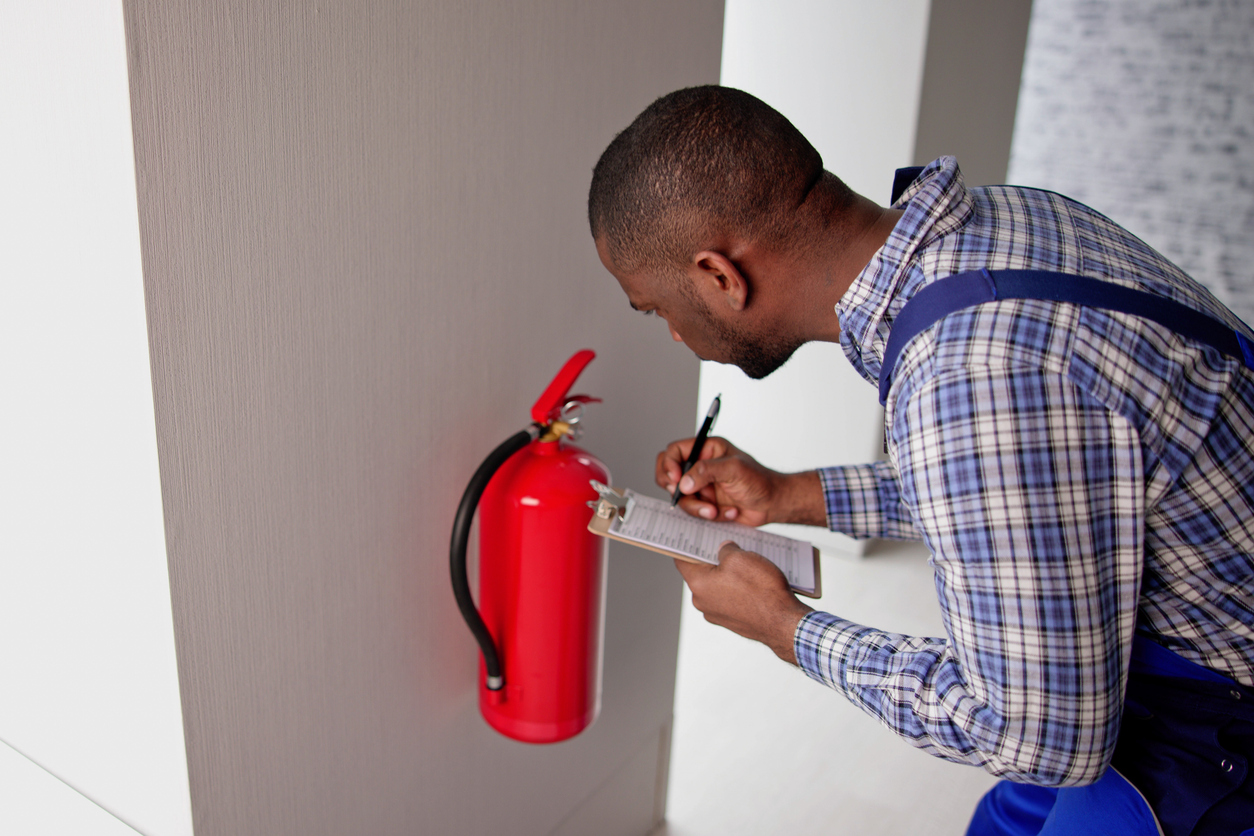Fire safety is one of the most critical responsibilities in any business environment. Whether you operate a small retail shop or oversee a sprawling industrial complex, the need to protect people, property, and operational continuity from the devastating effects of fire cannot be overstated.
For Nigerian businesses, this responsibility is not just a matter of compliance — it’s a core aspect of responsible business management. Fire outbreaks continue to cause billions of naira in damages annually across the country, often resulting from preventable causes such as faulty wiring, improper storage of flammable materials, and a lack of safety planning.
At Just HardRich Global Resources Limited, we take fire safety seriously. As Nigeria’s choicest Electrical Power and Control Engineering Company, we understand that robust fire risk assessments are essential for both compliance and peace of mind. This guide breaks down everything you need to know about fire risk assessments — with practical, tailored insights that every Nigerian business owner and facility manager can benefit from.
What Is a Fire Risk Assessment?
A fire risk assessment is a methodical evaluation of a building, facility, or workplace that identifies fire hazards, evaluates the likelihood of a fire occurring, and recommends measures to eliminate or reduce those risks. It also includes planning for safe evacuation and emergency response in the event of a fire.
In simple terms, a fire risk assessment answers three key questions:
- What could cause a fire here?
- Who is at risk if a fire breaks out?
- What can be done to reduce or eliminate the risk?
Fire risk assessments are not a one-time formality. They are an ongoing responsibility that should evolve with your business, infrastructure, and operations.
Why Is a Fire Risk Assessment Important for Nigerian Businesses?
In Nigeria, fire safety regulations may vary depending on your state and local government area, but they are universally underpinned by occupational safety laws and insurance requirements. However, beyond regulations, the benefits of conducting a fire risk assessment are substantial:
- Protect lives – Employees, customers, vendors, and visitors are safer in a well-assessed and prepared environment.
- Preserve assets – Machinery, electrical infrastructure, documents, and inventory are better protected.
- Ensure business continuity – A fire incident can cripple operations for days, weeks, or permanently.
- Legal and insurance compliance – Non-compliance may lead to fines or denied insurance claims.
Just HardRich Global Resources Limited regularly partners with businesses across Nigeria to implement preventive electrical designs and fire-resistant engineering solutions that comply with best practices and reduce fire risks drastically.
Key Components of a Fire Risk Assessment
A thorough fire risk assessment should address several critical areas. Here’s a breakdown of the essential components that every Nigerian business should include:
1. Identification of Fire Hazards
Every workplace, regardless of size, has potential fire hazards. A detailed inspection should uncover:
- Sources of ignition – These include electrical faults (e.g., exposed wires, overloaded circuits, poorly maintained panels), open flames, sparks from machinery, or overheating equipment. At Just HardRich, we install smart control systems that detect overheating and irregularities in real-time — reducing fire threats significantly.
- Sources of fuel – Paper, cardboard, fuel, cooking oil, wooden structures, fabrics, and even poorly managed waste bins can become fire accelerants.
- Sources of oxygen – While ambient air is always present, increased airflow from HVAC systems, open windows, or even chemical processes can fuel fires.
A good fire risk assessor evaluates how these sources interact and where risks are most pronounced.
2. Identifying People at Risk
Who could be affected if a fire breaks out? This includes:
- Employees working on-site.
- Contractors or third-party vendors.
- Customers or visitors.
- Vulnerable individuals — elderly workers, those with disabilities, or non-English-speaking personnel who may have trouble understanding emergency instructions.
Businesses must ensure that escape plans, signage, and support systems accommodate every individual, regardless of ability. For example, installing emergency voice communication systems and illuminated signs in large facilities improves visibility and understanding during an evacuation.
3. Evaluation of Risks
After identifying hazards and people at risk, it’s crucial to evaluate:
- How likely it is for each hazard to lead to a fire.
- The severity of impact if a fire occurs.
- The effectiveness of existing safety systems — alarms, detectors, extinguishers, sprinkler systems, and escape routes.
This evaluation forms the basis for deciding which improvements are urgently needed.
Reducing and Managing Fire Hazards
Once risks are identified, they must be managed, eliminated, or reduced. This is where innovation plays a vital role.
Practical Mitigation Measures:
- Upgrade Electrical Systems – Outdated or substandard wiring is a major cause of fires in Nigeria. At Just HardRich Global Resources Limited, we specialize in installing and maintaining high-quality, load-resistant electrical systems designed for commercial and industrial applications.
- Segregate Flammable Materials – Fuel or chemicals should be stored in ventilated, flame-resistant storage units away from heat sources.
- Install Smart Detection Tools – Modern fire alarm systems can detect smoke, heat, and carbon monoxide in real-time and notify key personnel via mobile alerts.
- Use Fire-Resistant Materials – Construction materials, insulation, furniture, and ceiling panels should comply with fire retardant standards where possible.
- Introduce Safety Controls – These include automatic shutdowns for overheating equipment, surge protection, and real-time monitoring of power load distribution.
Planning for Emergencies
Even with the best preventive measures, fires can still happen. Emergency planning is essential for reducing the chaos and loss associated with fire outbreaks.
Elements of a Solid Emergency Plan:
- Clearly marked emergency exits – Exit paths must be accessible and well-lit at all times. No obstructions.
- Fire detection and alarm systems – Smoke detectors, fire alarms, and call points must be in place and tested regularly.
- Firefighting equipment – Extinguishers, hose reels, fire blankets, and sprinkler systems should be functional and accessible.
- Assembly points and signage – These should be known to all staff members and periodically reviewed.
- Emergency lighting – Battery-powered lights that guide occupants during power failure or smoky conditions are non-negotiable in enclosed buildings.
At Just HardRich, we consult on and implement automated fire protection integrations that complement your electrical infrastructure, ensuring maximum readiness.
Fire Safety Training and Drills
Human error and panic can worsen fire situations. This is why regular training is critical:
- All staff must understand fire procedures, including how to raise alarms and use extinguishers.
- Fire marshals should be appointed and trained to manage evacuation during emergencies.
- Fire drills should be conducted at least twice a year — more frequently in high-risk environments.
Training should also form part of your new employee orientation. Everyone needs to be informed from day one.
Who Is Responsible for Conducting Fire Risk Assessments?
In Nigeria, the responsibility for fire risk assessments typically falls to:
- Business owners or CEOs.
- Facility or building managers.
- Safety officers or administrative heads.
Regardless of title, the individual(s) must ensure that assessments are conducted by someone competent. If internal staff lack the necessary skills or understanding, businesses should engage experienced consultants or engineering experts.
Just HardRich Global Resources Limited offers fire risk assessment consultancy alongside our core electrical and control engineering services, ensuring that safety is embedded in your systems from the ground up.
When Should Fire Risk Assessments Be Conducted or Reviewed?
Fire risk assessments are not a one-time obligation. They should be reviewed regularly and especially under the following conditions:
- Annually – As a best practice, conduct a full review every 12 months.
- After significant changes – Layout modifications, new machinery, new tenants, or updated production processes require a reassessment.
- After an incident – Any fire, even a minor one, should trigger a reassessment to understand root causes and fix vulnerabilities.
- Regulatory updates – As local or national regulations evolve, assessments must be revised to stay compliant.
Fire Risk Assessment Tips for Nigerian Businesses
Here are practical, real-world tips to guide you:
1. Document Everything
Maintain thorough records of:
- Inspection checklists
- Maintenance logs
- Risk assessment forms
- Training records
This protects your business legally and provides reference points for future improvements.
2. Use Experts When Needed
Many fire risks are technical — tied to your building’s wiring, equipment, and layout. Let experienced professionals like Just HardRich Global Resources Limited handle your assessments and recommend solutions tailored to your facility.
3. Get Employees Involved
Involve staff in identifying hazards, practicing evacuations, and reporting unsafe behavior. Fire safety becomes more effective when it’s everyone’s responsibility.
4. Stay Informed About Innovations
Modern tools now make fire safety easier and more efficient. These include:
- IoT-connected smoke detectors
- Infrared thermographic inspections
- AI-powered alert systems
- Smart building integrations with auto-shutdowns
Just HardRich stays ahead of these trends, offering cutting-edge control engineering solutions that make fire risk management smarter and more proactive.
Conclusion
Fire risk assessments are not just about compliance — they’re about protecting what you’ve built. They are a vital layer of your operational foundation, helping to ensure that your workplace is safe, efficient, and future-ready.
As Nigeria’s choicest Electrical Power and Control Engineering Company, Just HardRich Global Resources Limited offers expert-driven, technology-enabled fire safety services that align with global best practices while addressing the unique challenges of the Nigerian business landscape.
Need help with your fire risk assessment or electrical safety upgrade?
📞 Call us today: +234 803 255 9417
🌐 Visit: www.justhardrich.com.ng
Let us help you power your business with safety, reliability, and precision — because at Just HardRich, we don’t just engineer systems. We engineer peace of mind.




